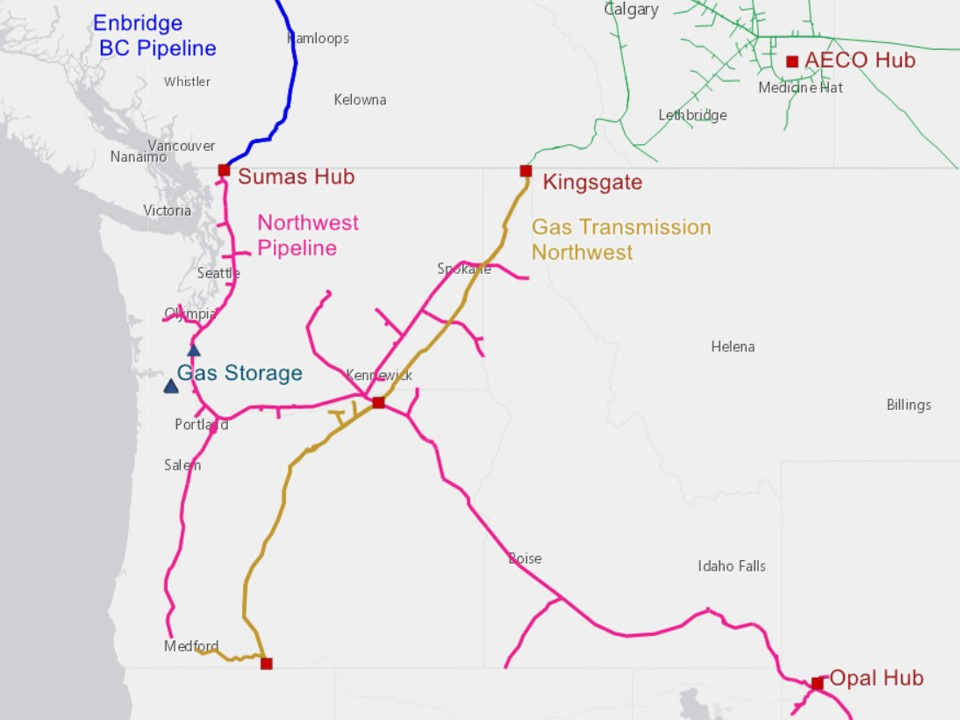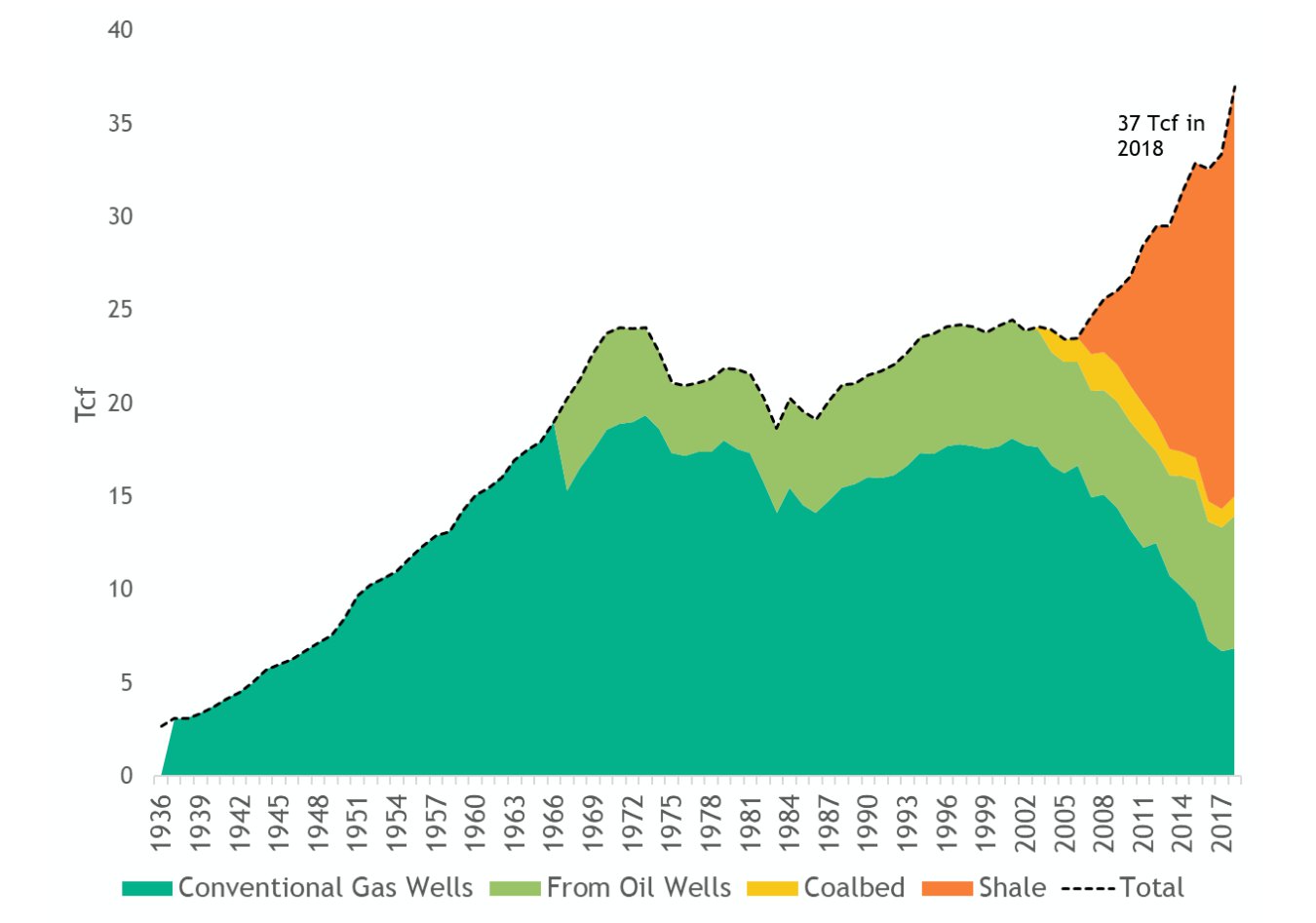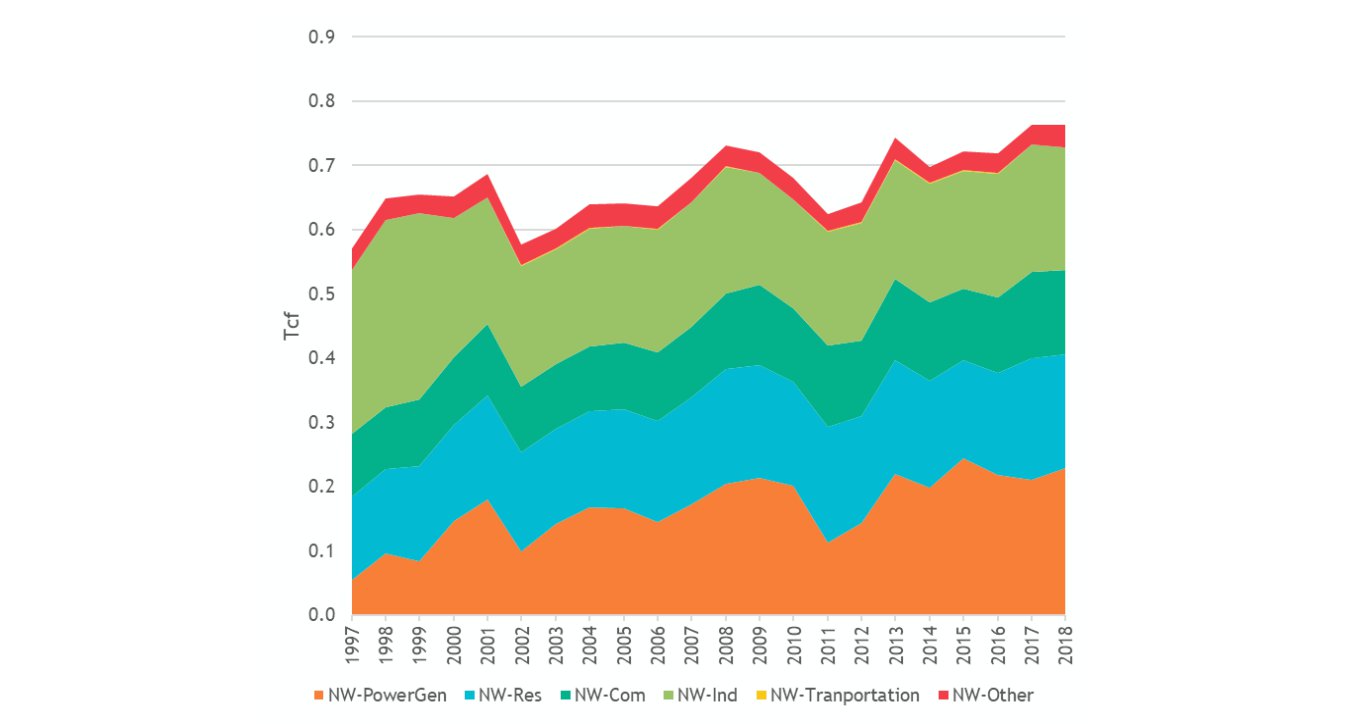The gas used in in the region is piped in from two primary sources. The Western Canadian Sedimentary Basin (WCSB) and the US Rockies region. The Northwest has a robust infrastructure build-out to accommodate the use of gas, including multiple long-haul pipelines, above and under- ground storage facilities, and modern distribution systems.
Northwest Natural Gas System

The Williams Northwest Pipeline supplies gas from British Columbia and Western Alberta to the Northwest along the I-5 corridor. Winter import flows from the North are typically around 1,150 mmcf/day (million cubic feet per day). The pipeline serves 26 natural-gas power plants (19 of which are West of the Cascades), as well two large underground gas storage facilities, Jackson Prairie Storage and Mist Storage. On the East side, the Northwest Pipeline interconnects with the Gas Transmission Northwest (GTN) pipeline system, and the US Rockies gas supply region. The GTN brings gas from Alberta fields to supply the Northwest and California. Winter import flows are typically around 2,150 mmcf/day. GTN serves 10 gas-fired power plants in the Northwest.
Prior to 2008, most natural gas was produced from conventional natural gas and oil wells. Now, with the advances in technology and technique (hydraulic fracturing of shale and horizontal drilling) since 2008, natural gas production in the US is at an all-time high. Gas production has surged in Western Canada as well.
US Annual Natural Gas Withdrawals

The Potential Gas Committee[1], in conjunction with the Potential Gas Agency at the Colorado School of Mines, has been tracking the potential supply of natural gas in the US since 1964. Every two year a group of industry experts convene to assess the future gas supply in the country – an assessment of the technically recoverable resource (includes probable and speculative). The 2018 study estimate was 3,374 Tcf (trillion cubic feet) of gas. This estimate was 20% higher than the 2016 assessment, which at that time was the highest ever. The EIA estimates of proven resource is 464 Tcf. Adding this to the potential gives 3,828 Tcf of natural gas. To put this in perspective, the cumulative gas withdrawals in the US[2] since 1936 were 1,552 Tcf, and the withdrawal in 2018 was 37 Tcf, an all-time high. At this rate, 3,828 Tcf of gas supply converts to 103 years of gas.
The Northwest imports roughly 2/3 of the gas consumed for the region from Canada, which is the world’s 4th largest natural gas producer. The estimate of proven recoverable gas resources in Canada is 1,220 Tcf.
Demand for natural gas has been increasing both in the US overall and in the Northwest. Power generation has become the leading driver of demand growth and is now the largest consumer of gas. In the US overall, this is due to a number of reasons including an aging coal and nuclear fleet, highly efficient gas turbine technologies, and cheap gas. Gas exports are also growing, both LNG and pipeline gas to Mexico. In the Northwest, demand for gas from power plants can vary considerably from year to year as a result of dynamic hydro power conditions.
Annual Natural Gas Consumption in the Northwest

[1] http://potentialgas.org/about
[2] https://www.eia.gov/naturalgas/annual/


